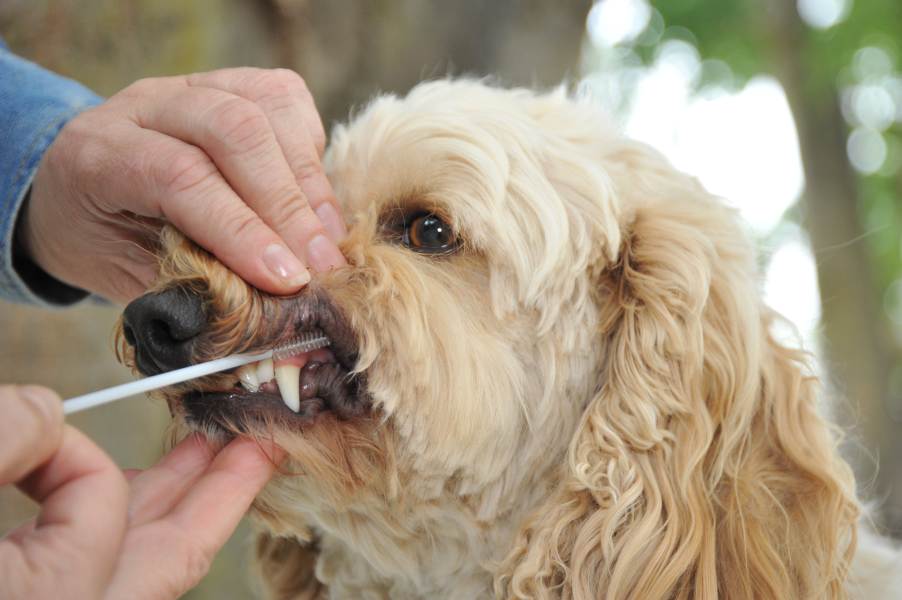Quick Summary
Click here for Price and Turnaround Time
Phenotype: Affected dogs typically present with vision loss, head tremors, walking and balance issues, and weight loss by 6 months of age. The disease is progressive and lethal by 18 months.
Mode of Inheritance: Autosomal recessive
Alleles: N = Normal, G = GM1 gangliosidosis
Breeds appropriate for testing: Shiba Inu
Explanation of Results:
- Dogs with N/N genotype will not have GM1 gangliosidosis and cannot transmit this variant to their offspring.
- Dogs with N/G genotype will not be affected by GM1 gangliosidosis, but are carriers. They will transmit this variant to 50% of their offspring. Matings between two carriers are predicted to produce 25% GM1 gangliosidosis-affected puppies.
- Dogs with G/G genotype are expected to develop GM1 gangliosidosis, a lethal disorder.
Results of this test can be submitted to the OFA (Orthopedic Foundation for Animals)
Sample Collection
Dog DNA tests are carried out using cells brushed from your dog's cheeks and gums. The preferred cytology brushes are sent to you by mail, or you may provide your own brushes. For accepted alternative brushes, click here
We recommend waiting until puppies are at least three weeks old before testing.

Step-By-Step:
- Make sure the dog has not had anything to eat or drink for at least 1 hour prior to collecting sample.
- When swabbing puppies, isolate each puppy from the mother, littermates and any shared toys for 1 hour prior to swabbing. Puppies should not have nursed or eaten for 1 hour prior to collecting sample.
- If collecting samples from more than one dog, make sure to sample one dog at a time and wash your hands before swabbing another dog.
- Label brush sleeve with name or ID of dog to be sampled.
- Open brush sleeve by arrow and remove one brush by its handle.
- Place bristle head between the dog’s gums and cheek and press lightly on the outside of the cheek while rubbing or rotating the brush back and forth for 15 seconds.
- Wave the brush in the air for 20 seconds to air dry.
- Insert brush back into sleeve.
- Repeat steps 5 - 8 for each unused brush in sleeve on a fresh area of cheek and gums. Make sure to use and return all brushes sent by the VGL. In most cases, it will be 3 brushes per dog. If using interdental gum brushes, please note that the VGL requires 4 brushes per dog and only moderate or wide interdental gum brushes are accepted.
- Do not seal brushes in sleeve.
- Place all samples in an envelope and return to the address provided.
ATTENTION:
- Do not collect saliva/drool – the key to obtaining a good sample is getting cheek cells on the swab
- Do not rub swab on the dog’s tongue or teeth – this will result in poor quality sample
- Do not collect a sample from a puppy that has recently nursed – the mother’s genetic material can rub off on the puppy’s mouth and contaminate the sample
GM1 gangliosidosis in the Shiba Inu breed (SI-GM1) is a hereditary lysosomal storage disorder caused by abnormal accumulation of GM1 ganglioside, a fatty molecule (lipid) important for normal functioning of nerve cells in the brain. Affected dogs typically present with vision loss, head tremors, walking and balance issues, and weight loss by 6 months of age. The disease is progressive and lethal by 18 months.
SI-GM1 results from the loss of a nucleotide (c.1668delC) in the b-galactosidase gene, which codes for the beta-galactosidase enzyme. The deletion causes a change in the last 15% of the beta-galactosidase enzyme that renders it dysfunctional. In nerve cells, beta-galactosidase is found in the lysosomes, vesicles inside the cells that break down and recycle molecules. In dogs with defective beta-galactosidase, accumulation of GM1 gangliosides leads to progressive damage of nerve cells of the brain and central nervous tissue.
SI-GM1 is inherited in an autosomal recessive fashion, which means that males and females are equally affected and that two copies of the defective gene are needed to cause the disease. Dogs with one normal and one affected gene (carriers) are normal and show no sign of the disease.
This mutation has not been identified in other breeds with GM1 gangliosidosis and is different from the mutation identified in Portuguese Waterdogs. Genetic testing assists veterinarians with diagnosis of SI-GM1 and helps breeders to identify carriers to avoid breeding these together.
